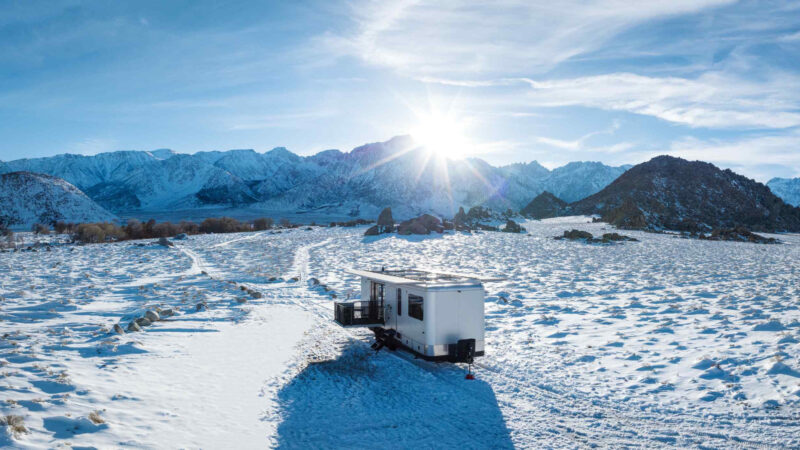Table of Contents Show
What comes to mind if you think of the phrase “living vehicle”? Does it make you think of home on wheels? Not referred to as a “recreational vehicle” but rather a “living vehicle,” this travel trailer isn’t built for the occasional camping weekend at a Jellystone.
Instead, this luxurious RV is meant to be lived in. Is it too good to be true? Let’s dive in and closely examine what makes Living Vehicle unique!
What Is Living Vehicle?
Living Vehicle’s tagline is “The ultimate off-grid luxury experience.” This company produces a fully sustainable, certified green trailer that exceeds LEED indoor air quality standards. It’s built on a commercial platform with marine-grade materials and offers a high-capacity lithium-ion automotive-grade energy system.
With this RV, you can truly experience freedom with its off-grid capabilities and functional design.
How Did Living Vehicle Begin?
In 2010, Matthew Hoffman was an architect of a specialty upfitting business. He decided he wanted to start his own company. He began with an old Airstream, renovated it, and marketed it. This started his Airstream renovation business.
But in 2016, the idea for the Living Vehicle was born. Matthew and his wife Joanna spent years developing and testing products to achieve a sustainable, environmentally-friendly mobile lifestyle.
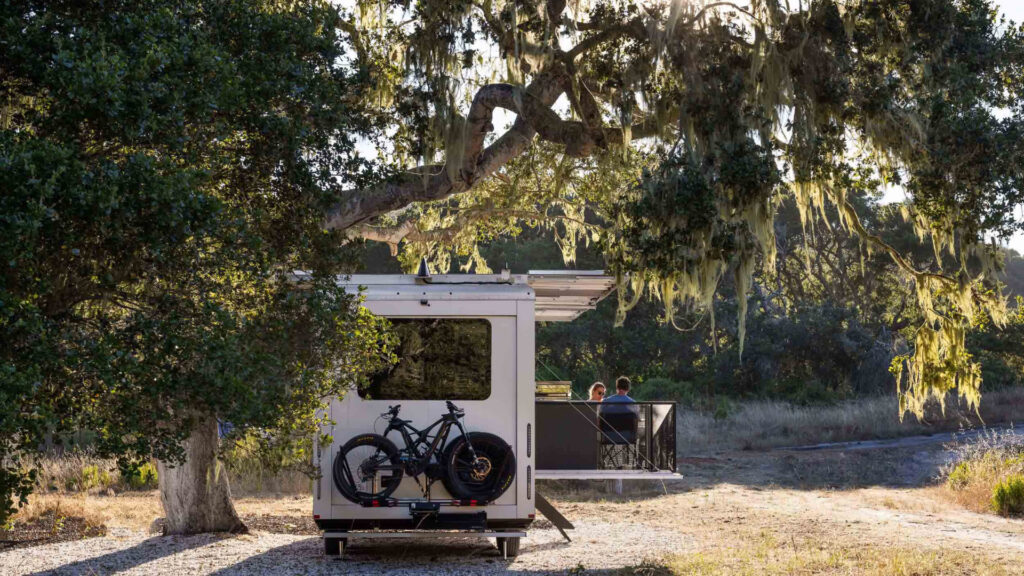
How Are Living Vehicles Different From Travel Trailers?
One of the most significant differences is the volume of production. Living Vehicle manufactures up to 25 trailers a year.
This means the company takes a very intentional and hands-on approach with every unit. You’ll find no shortcuts or compromises.
Because of the low volume, they can introduce new features, add innovative technologies, and implement high-requested changes more quickly – even within a single build.
Besides production, a huge difference between a Living Vehicle and other travel trailers is that it’s made for full-time, off-grid living. You can be in the middle of nowhere and still have all of the amenities of a home.
And you’re doing so in an eco-friendly way, leaving a minimal carbon footprint and preserving the natural world you’re exploring. Living Vehicle produces trailers that have more solar energy than most residential homes.
About the 2024 Living Vehicle
The 2024 Living Vehicle will certainly turn heads. This state-of-the-art luxury trailer only uses high-quality, eco-friendly materials and incorporates the latest technologies. You can choose from two different aluminum-chassis trailer models: Heavy Duty (HD) and Luxury Touring (LT).
Both models have three trims: Core, Max, and Pro. The HD is a triple-axle trailer, while the LT is a dual-axle trailer. Let’s examine what makes it “the most powerful trailer on Earth.”
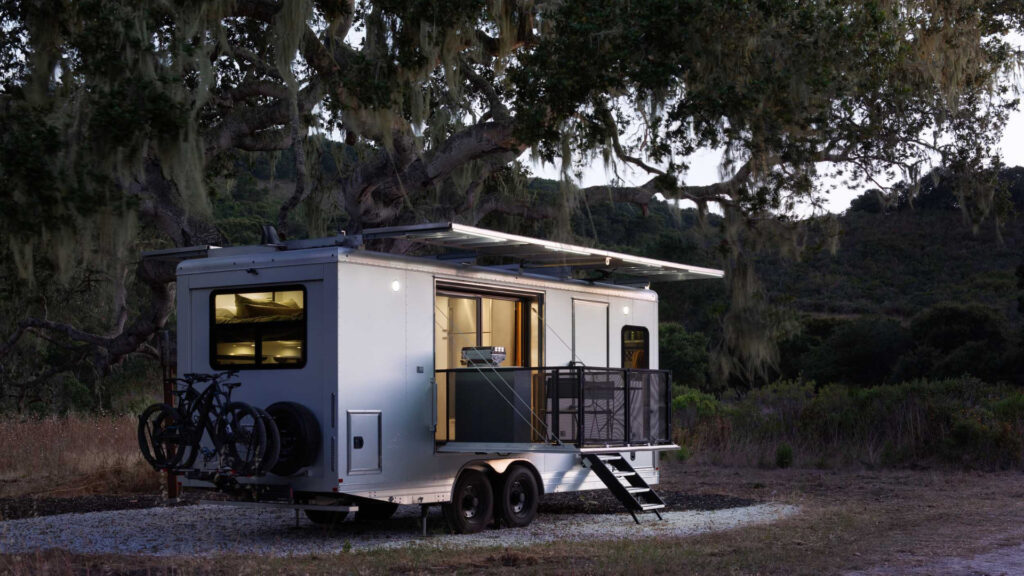
The Living Vehicle Power System
The powerhouse behind Living Vehicle is the energy system, which uses lithium-ion batteries made from marine-grade components. These batteries are rated for 10+ years, so you don’t have to worry about replacing them any time soon.
Depending on which model you get, the solar power varies. The LT solar base is 1200-3400 watts, and the HD solar base is 2000-4400 watts. Customers can choose from the Core, Max, or Pro levels to determine the exact size of the energy system.
The Pro trim also comes with Living Vehicle’s dual solar awning. This engineering marvel features a 48-inch horizontal knife-edge aluminum plane that extends to each side of the trailer.
“When viewed from above and extended, the top of the Living Vehicle is covered with ultra-efficient, industry-leading, lightweight thin-film monocrystalline solar panels. When closed, there is nothing but a sea of solar panels.”
But should you need a backup power source, every Living Vehicle is equipped with a 6.5 kilowatt Cummins 240-volt commercial propane-fueled generator.
Keep in Mind: Are you looking for an RV to live in full time? Then look no further! These are the best RVs to live in on the market.
Electric Vehicle Charging
All three options — the Core, Max, and Pro — offer Level 1 electric vehicle charging. The Pro also offers Level 2 electric vehicle charging.
This free and clean solar energy will save time, money, and the environment. Simply use the onboard power of the Living Vehicle to recharge your EV overnight, and you’re off adventuring again the next day.
Watergen’s Water-From-Air Technology
Watergen’s patented technology uses the air around you to extract the water you need. This is truly the definition of off-grid, fully sustainable living. No matter where you travel, even in the most arid and remote locations, Watergen’s technology effectively cleans and filters safe drinking water.
It produces about five gallons of filtered water a day. Paired with the Living Vehicle’s 100-gallon freshwater tank, you can live comfortably in any location for as long as you want.
Luxurious Amenities and Features
The Living Vehicle sacrifices nothing. The chef’s kitchen includes a multi-burner induction stove, an electric marine oven/convection/microwave combo, an Insta-hot water filtration system, and an ice maker in the freezer.
You can add on the Luxury Housekeeping Package, which includes a washer/dryer combo, a stainless-steel dishwasher, and a central vacuum system.
The Spa Bathroom Package provides the ultimate comfort and luxury retreat. This option features a 12-volt vitreous porcelain macerating toilet with an automatic electric flush, an extendable outdoor shower, a wall-mounted teak and stainless folding seat, and a lighted mirror with surface heat anti-fog technology.
The Off-Grid Spa Bathroom Package replaces the standard toilet with a composting toilet and redesigns the wastewater management system by converting the existing black water tank into a secondary greywater tank.
Keep in Mind: If you’re looking to travel in style, you have to see this Luxury Rotating RV!
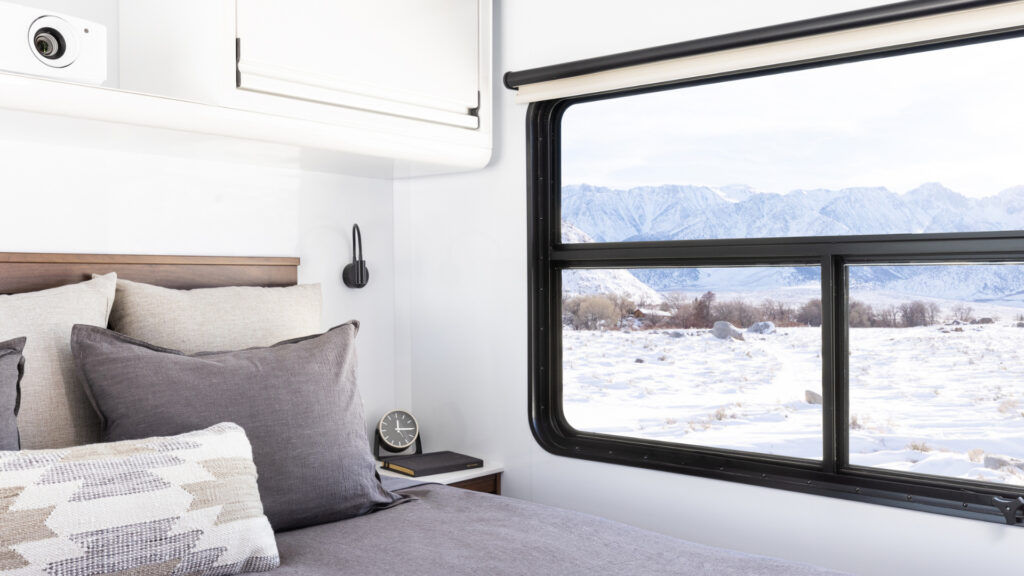
What Type of Truck Is Needed to Tow a Living Vehicle?
The Living Vehicle sleeps up to four people, but with the Automatic Euroloft option, the trailer could sleep up to eight.
The HD measures 30 feet long, while the LT measures 24 feet 2 inches long. The exterior height measures 11 feet 6 inches or 11 feet 9 inches with the All-Terrain Capability add-on.
The LT weighs 14,000-16,000 pounds, depending on if you purchase the Core, Max, or Pro trim. The HD weighs 18,000-20,000 pounds. Because of these weights, the team at Living Vehicle recommends a 3/4- or 1-ton truck powered by a diesel engine.
How Much Is the Living Vehicle?
The most basic level is the LT Core, which starts at around $360,000. But the term “basic” is misleading as it still features many high-quality, luxurious amenities and robust systems.
The highest-end Living Vehicle, the HD Pro, starts at around $640,000. However, you could easily configure a $1 million trailer with all the options and upgrades.
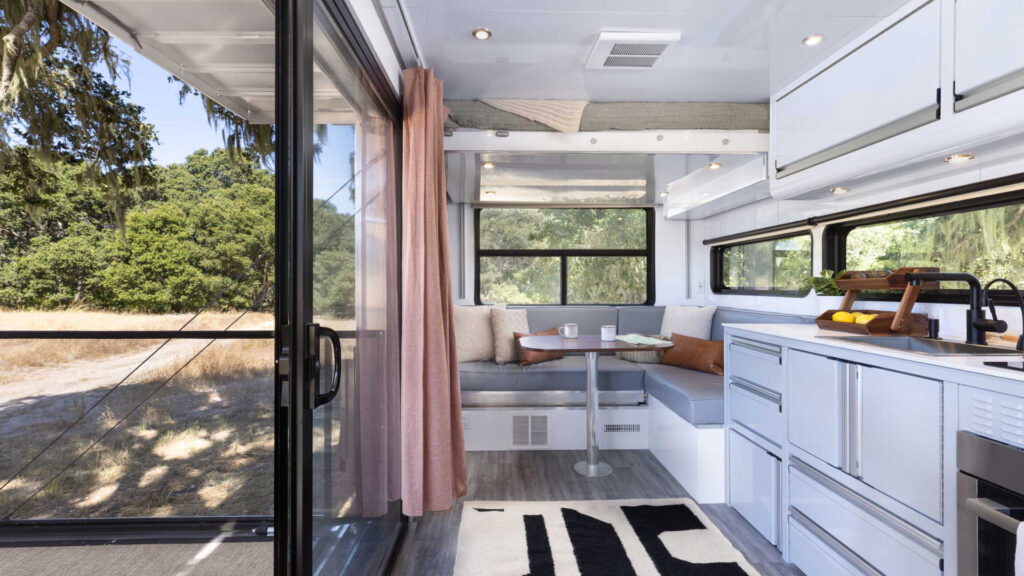
The Living Vehicle: Luxury Unplugged
Is this RV for everyone? Of course not. Neither is a Jayco fifth-wheel, Tiffin motorhome, or four-wheel truck camper.
But for travelers who are serious about protecting the environment they seek to explore, this off-grid, fully sustainable vehicle will appeal to them.
This trailer compares more to a luxury villa than a towable RV with all of its comforts and features.
You can take this RV anywhere. Park along the vast canyons of the Southwest. Bask in the sunshine along Florida beaches. Watch the sun rise and set over magnificent Denali in Alaska. A Living Vehicle can take you anywhere for however long you want to stay.
Will this innovative trailer be yours one day?




